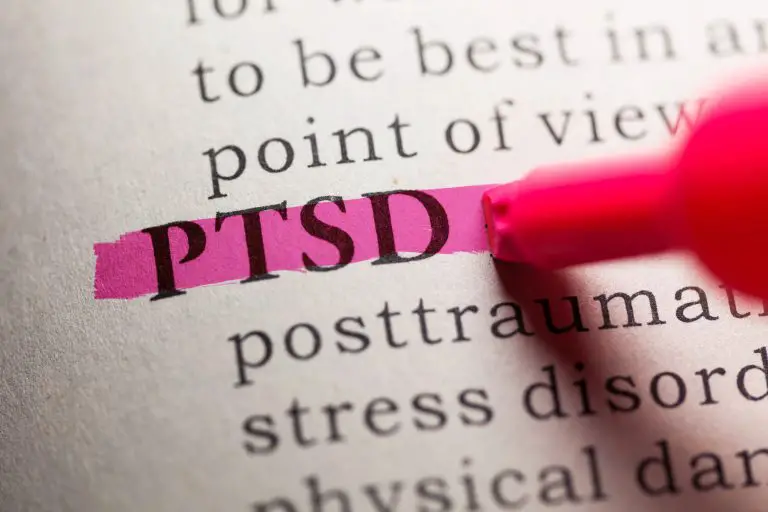A Step-by-Step Guide to Creating and Using a Self-Reflection Journal
A Step-by-Step Guide to Creating and Using a Self-Reflection Journal
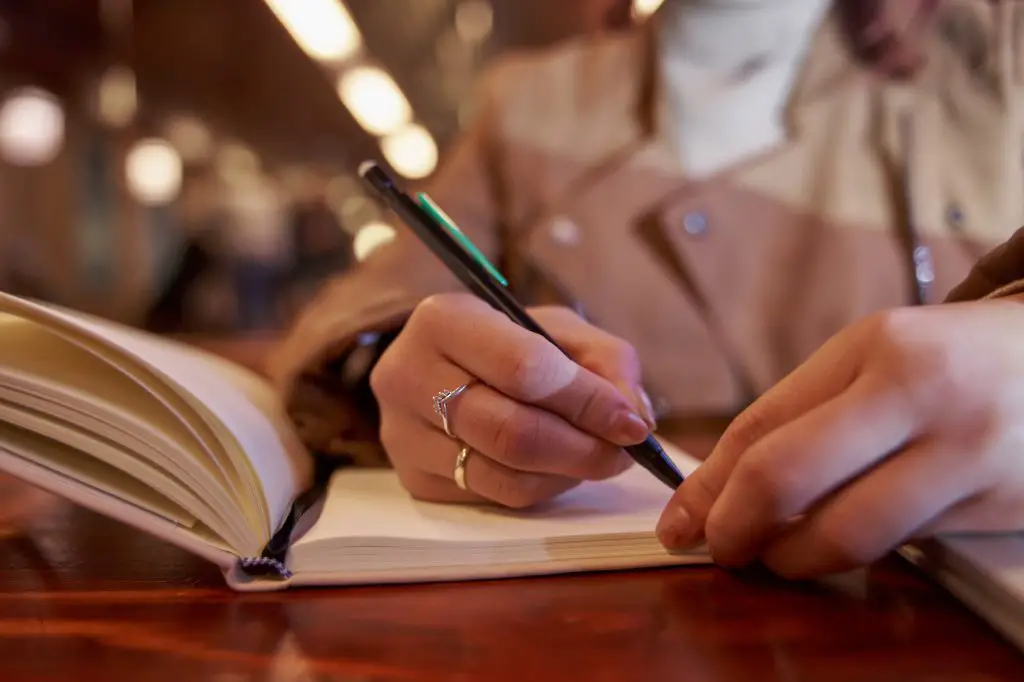
Mental wellness can mean several different things in this world we live in. A buzzword for your average social media influencer. This is a misunderstood phrase by many who don’t think mental health is legitimate. The loaded call to action your local therapist throws around to try and convince you to take care of yourself.
What is mental wellness, though, really? As a licensed mental health therapist who helps individuals with various levels of trauma and functioning every day, I define mental wellness as the measure of an individual’s level of well-being mentally and emotionally. One’s mental wellness affects one’s overall outlook, general sense of well-being, and ability to function healthily in the world around them.
The World Health Organization defines mental health as “a state of mental well-being that enables people to cope with the stresses of life, realize their abilities, learn well and work well, and contribute to their community. It is an integral component of health and well-being that underpins our individual and collective abilities to make decisions, build relationships, and shape our world.”
In this fast-paced world that glorifies who is the most stressed and overworked, it is more important than ever to have some tried and true coping skills at your disposal when the stress gets too much to handle. One such coping skill is a self-reflection journal. One can do little research to know the negative impacts of tension in the long term on our bodies and minds. Stress is like acid, eroding our very well-being and causing aches and pains not only physically but emotionally.
To understand how to utilize a self-reflection journal, we must first understand the fundamentals of self-reflection. Self-reflection can be a form of mindfulness. Research shows that daily mindfulness practices can be just as effective as anti-anxiety medication. Mindfulness entails being present in the current moment and aware of your body, mind, and surroundings.
Self-reflection goes hand in hand with mindfulness as it encourages one to look inward at one’s thoughts, emotions, and underlying motives for behavior. Self-reflection can help one better understand themselves, their place in society, and how to function best. Self-reflection enhances our knowledge of ourselves and why we do what we do. Regularly practicing a self-reflection journal can help promote mindful awareness of who we are, and why we do what we do and aid in helping us show up in our lives the way we want to.
I often see individuals thinking and behaving without intention or awareness in my professional therapy work. They are, in essence, slaves to their pre-programming because they lack the necessary skills and discipline to pause and reflect on their thoughts, emotions, and behavior to understand the why behind what they do. Engaging in a regular practice of self-reflection journaling can lead to mastering one’s thoughts and ultimately influencing one’s behavior.
Think about it: you no longer have to be at the mercy of your emotional reactions and bad habits. You don’t have to identify with an addictive behavior or inappropriate impulse. You are not your thoughts or actions. Thoughts, emotions, and behavior are typically messages about underlying needs and wants that are often not being listened to.
If people can pause and reflect internally on their actions and why they do what they do, they can better get to the root of their underlying needs and meet those needs in healthier, more adaptive ways. This makes you in charge of your emotions, thoughts, and behaviors, not the other way around. Empowerment at its finest.
Journaling has long since been a known coping skill that helps with processing thoughts and emotions. Some use it as a diary documenting their day. Others use journaling as though it’s a safe listening ear. They can pour out their deepest secrets, emotions, and hurts where they may not have been accepted or understood.
Combining journaling with active self-reflection can lead to a powerful coping mechanism for unburdening yourself and gaining insight into your internal world. Compared to simple journaling or the typical thought-dumping practice with a diary, self-reflection journals are more structured and intentional in nature. There are multiple ways to utilize a self-reflection journal to gain the maximum benefits from it.
Steps in Writing a Self-Reflection Journal
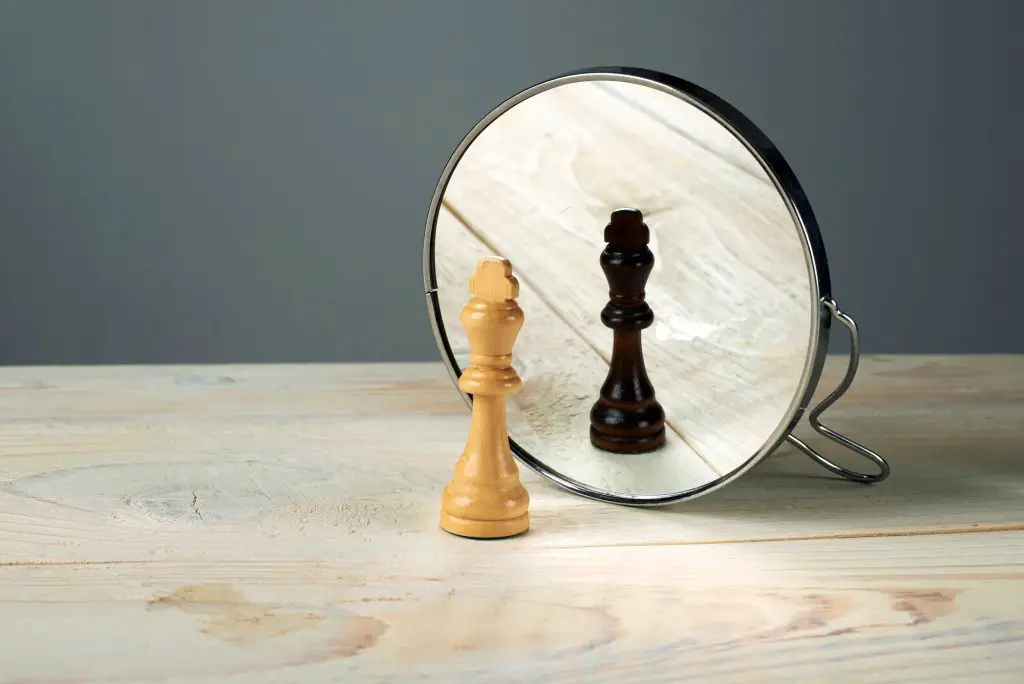
Creating a self-reflection journal to aid your pursuit of mental wellness does not need to be complicated, taxing, or overly time-consuming. If you’re at a point where your stress is pushing you to find creative outlets to deal with it, the last thing I’d imagine you need or want is a coping activity to feel like another chore to deal with. A well-crafted self-reflection journal should be a relief to the soul and an activity that one can look forward to.
Step 1: Schedule a Time
To get the most out of a self-reflection journal, you will need to incorporate it into your regular routine. Just as we cannot fully know the benefits of exercise if we only do it once a week or once a month, we will not gain benefits from only practicing this coping activity every once in a blue moon. Everything worth doing takes time, and this is no different.
A regular self-reflection journal can be done once a day (if you’re ambitious) or a few times a week. When I talk about incorporating something new with my clients, we frame it as goal setting. If you’re entirely new to this whole mental wellness thing, I suggest having a twice-a-week goal. If you’re more experienced in this arena, starting four times a week would be an appropriate goal. Once you master that goal, work up from there to increase your frequency.
Step 2: Reflection with Non-Judgement
As stated above, reflection is a form of mindfulness or meditation. Part of a self-reflection journal is sitting for a few minutes reflecting or thinking about your day, challenging moments, etc., and factually recalling what happened. An important key here is to reflect without judgment. I encourage my clients and myself in this practice to “be curious” about what is happening and do your best not to put a value statement on it. Write it in your journal when you’ve recalled or visualized what you want to reflect on.
Step 3: Have a Plan or Intention
A good plan begins with knowing what you’d like to accomplish. Reflecting on the recent interaction with your family and why you did “it” again to help you react differently in the future is much different than processing a stressful interaction at work or understanding your place in this universe (existential, I know).
What do you want to accomplish in this particular self-reflection journal session? Are you following a guide or theme for a few days or weeks, or does it change every time depending on the need? Once you know your intention for reflection and journaling, you can ask meaningful questions to help you do that.
Step 4: Investigate
This is where we can pull from our favorite law and order shows and put on our detective glasses. Once you answer whatever questions from step 3 (read on for practical examples in the next section), you can more deeply reflect on the underlying influences on reactions and behavior. Emotions, and ultimately, behavior, are always communication about our needs and wants.
Emotions in and of themselves are tied to our underlying needs. When we learn to identify what emotions we feel and then listen to them, we can, in turn, get our needs met more effectively. Part of a self-reflection journal is to help get to the bottom of our needs and then get those needs met.
This is what we call Emotional Intelligence. Emotional Intelligence is understanding what is going on in your internal world – i.e., emotions, thoughts, and motivations for behavior – and then being able to, like a traffic controller, direct said responses and stimuli. Emotions and behavior don’t have to control you; you can learn to master that part of yourself. A self-reflection journal, used correctly, can help increase internal and external self-awareness and, ultimately, give you more control of your responses and needs. (see sections below for practical examples)
Self-Reflection Journal Prompts and Exercises

Here are some examples of self-reflection prompts to get you started:
Personal Growth Journal Prompts:
- In what ways have I grown in the past year? How do I want to continue growing emotionally, mentally, and spiritually in the next year?
- What behaviors or habits do I engage in that keep me from being my best self?
- What areas of my life feel stagnant or stuck, and how can I help myself gain forward movement?
Relational Journal Prompts:
- How are my relationships in my life feeling right now? Are there any behavior or relational patterns I’d like to change that are not benefiting me?
- What conflicts or issues continually surface in my relationships? Why do I think this is happening?
- What do I value most in relationships with others, and how can I increase behavior that fosters more meaningful connections?
Profession and Career Journal Prompts:
- How satisfied am I with my current career and responsibilities?
- How am I contributing to or hindering a healthy workplace culture?
- How is my work-life balance, and how can I improve this area to increase my well-being?
Overall Wellness Journal Prompts:
- How is my physical, mental, and emotional health right now? How am I feeling?
- What does self-care mean, and how can I add sustainable self-care practices?
- How well am I caring for my physical and emotional health? What ways can I improve on this?
- What habits keep me from a balanced, healthy life, and how can I start incorporating healthier thoughts and behaviors?
Personal and Creative Expression Journal Prompts:
- Personal and Creative Expression Journal Prompts:
- What does nurturing creativity in everyday life look like for me?
- What activities bring me joy and a sense of fulfillment when I engage in them?
- How authentic am I in the various spheres I find myself in? How can I foster more authenticity in my everyday life?
- Where do I find inspiration to be creative, and what diminishes my creativity and ability to express myself without blockages?
Introspective and Spiritual Journal Prompts:
- What do I consider my overall values, and am I living in alignment with them based on my actions?
- How am I engaging in practices that bring me joy, contentment, and peace? What steals my joy, contentment, and peace, and how can I foster those experiences for myself?
- What spiritual goals do I have for myself this year, and how can I practically achieve them?
- Are the people I surround myself with helping me enhance who I am and bring me closer to my goals, or are they bringing me down or causing me to self-abandon?
- What behavior enhances my spiritual goals, and what takes them away?
Specific mindfulness techniques can enhance the overall self-reflection process and experience.
Mindfulness Practices that Aid Self-Reflection:
- Meditation – Spending a few minutes sitting in quiet meditation on an idea, listening to calming music, or noticing your breath can help quiet the mind and set one up for more productive self-reflection. One of my favorite ways to do this is to look up guided meditations on YouTube.
- Breath work – Various breathing exercises can be beneficial in calming the body and switching from the fight/flight response to rest/digest. It is a simple way to help relax the body and better allow your mind some space to think. One of my go-to breathing exercises is breathing in for 5 seconds, holding for 2 seconds, and breathing out for 7 seconds—then repeating five times.
- Gratitude – Many studies show the benefits of gratitude on one’s mindset and overall life outlook. Stress and pessimism close the mind, whereas gratitude and calm open it. Finding something you are thankful for can dramatically shift your mindset to allow greater self-reflection and insight.
- Engaging the senses – Spending time being aware of your surroundings—sights, sounds, touch, taste, and smell—can help you calm your mind and ground yourself in the moment so that you can better tune in to your internal world.
- Self-compassion – Nothing squashes insight and creative flow more than critical self-talk. When we can utilize self-compassion practices to help calm that essential voice and better align with who we are—imperfect humans who still have excellent qualities in the face of failure—we can better open up to ideas that enlighten us about our weaknesses and areas of growth because we can move from a place of defense to openness.
With any of the above prompts and practices, you can personalize and build on them. Asking questions like, “Why do I think I respond this way?” for any prompt can help you start to understand the underlying motivations and perhaps even traumas influencing thoughts and behavior. Even simple moment-by-moment or experiential questioning can help unpack specific scenarios you’d like to understand more deeply.
Ways to tailor your journaling experience:
- Reflect on recent experiences that are troubling or continually taking up space in your mind. Then, get curious and ask questions.
- Discuss goals you’d like to accomplish and map out what that looks like and what might be barriers to reaching them. Making a plan to accomplish goals is a great coping ahead activity.
- Schedule quarterly or periodic self-reflection times to dive into your internal world – thoughts, feelings, relationships, experiences – take an inventory regularly to stay aware and present in your life.
- Simply curious about any area you are reflecting on can help with self-reflection.
Examples of a Self-Reflection Journal
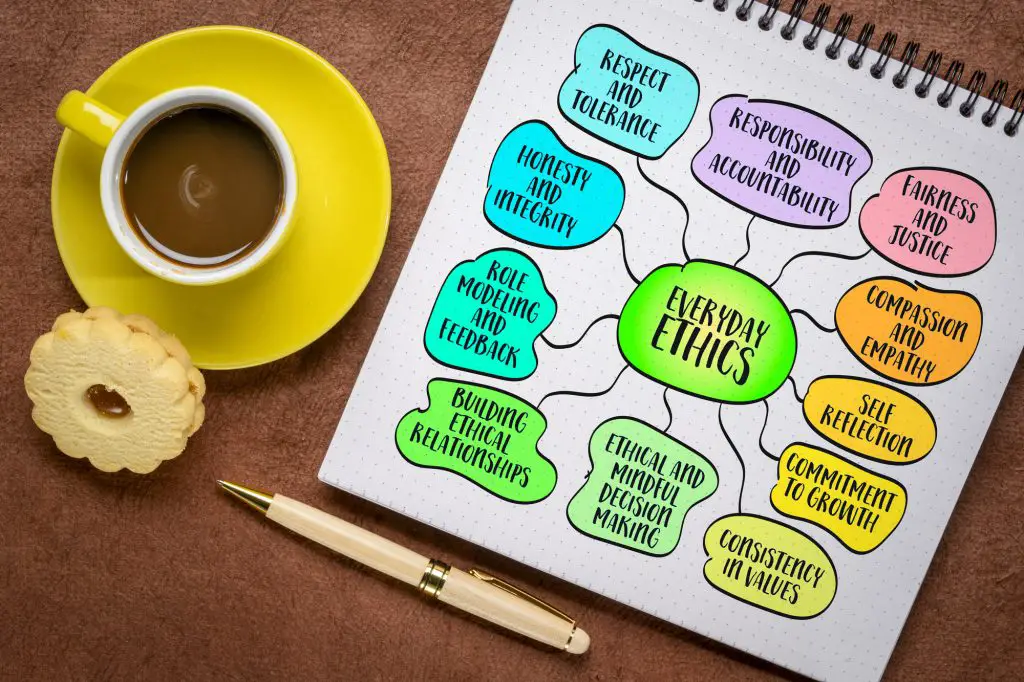
- Daily Prompt Reflection – Having a question-inspiring reflection each day can help get the creative flow going. Examples include, “What do I feel grateful for today?” and “What was a difficult or trying experience today, and how can I learn from it?” These can all be great places to start.
- Gratitude Practices – Journaling specifically involving gratitude can help foster a more improved self-outlook and feelings of contentment and joy in one’s life. Gratitude shifts one’s focus from a sense of lack or judgment to one of abundance and thankfulness – inward to outward. This can be accomplished simply by listing out a certain number of things you’re grateful for each day – no matter how insignificant.
- Journaling by Bullets – Can be a way to organize your thoughts, goals, and overall life. Bullet journals can include tasks to complete, upcoming appointments and events, goal and habit tracking, and overall mood trackers. This form of journaling can be easily adapted to meet individual needs.
- Journaling Through Art – For those who enjoy art or consider themselves artists, journaling involving creative and personal expression can be incredibly beneficial and cathartic. One can incorporate self-reflection into their expressions, whether it looks like a musical outpouring or drawing/painting. Emotions and how you feel can be poured out creatively to help process and express underlying experiences.
- Travel Journal – This type of journal allows space for certain sojourners to process their travel experiences to better capture how various places have impacted them. Travel can have a great impact on the human experience and is worth taking time to explore.
- Personal Development Journal – This type of journaling can provide structure and direction to self-reflection. These journaling experiences encourage and challenge one to look deeper, explore various aspects of one’s life, and ultimately challenge comfort zones to nurture personal growth.
- Daily Experiences Journal – Journaling daily experiences can provide a simple way to explore and reflect on the experiences of one’s day. This can be as in-depth as one likes – a simple brain dump of experiences or a more in-depth look at emotional responses and underlying need exploration. This can be an excellent way to process one’s day and unload stress.
Key Takeaways

As we have walked this journey of curating a self-reflection journal that can meet the needs of any occasion, we’ve learned a few things along the way. Mental wellness affects every aspect of our lives and is worth exploring. Mindfulness practices like gratitude and meditation can aid one in engaging in self-reflection. Self-reflection can be done for many reasons and doesn’t have to look a certain way.
Everyone starts their journey in different places. Some have been in the mental health world for quite some time, while others are just getting their feet wet. Wherever you are in your mental health journey, a key takeaway that can apply to everyone is understanding where you are and where you are coming from, a vital step in growth and healing. Working towards whatever next step you can reach will help you to achieve your goals and work towards a healthier, happier you.
Some things we find hard to face or hear, but ultimately, we must listen to them. Whenever I faced a hard truth or fact about myself, it forced me to understand better why I responded that way and ultimately learn and grow. This isn’t a race to the finish line type of journey; it’s the experience of the journey itself where the gold lies – in the present moment, fully alive.
About the Author:
Brianna Itter, Licensed Associate Counselor, EMDR Therapist

Brianna is a Licensed Associate Counselor who is EMDR trained and practices out of Arizona. She has experience helping individuals of all ages and stages of life heal and move on from trauma. She is passionate about helping others realize their potential and experience life as their best selves. She frequently treats those with anxiety, depression, mood disorders and various life stressors.
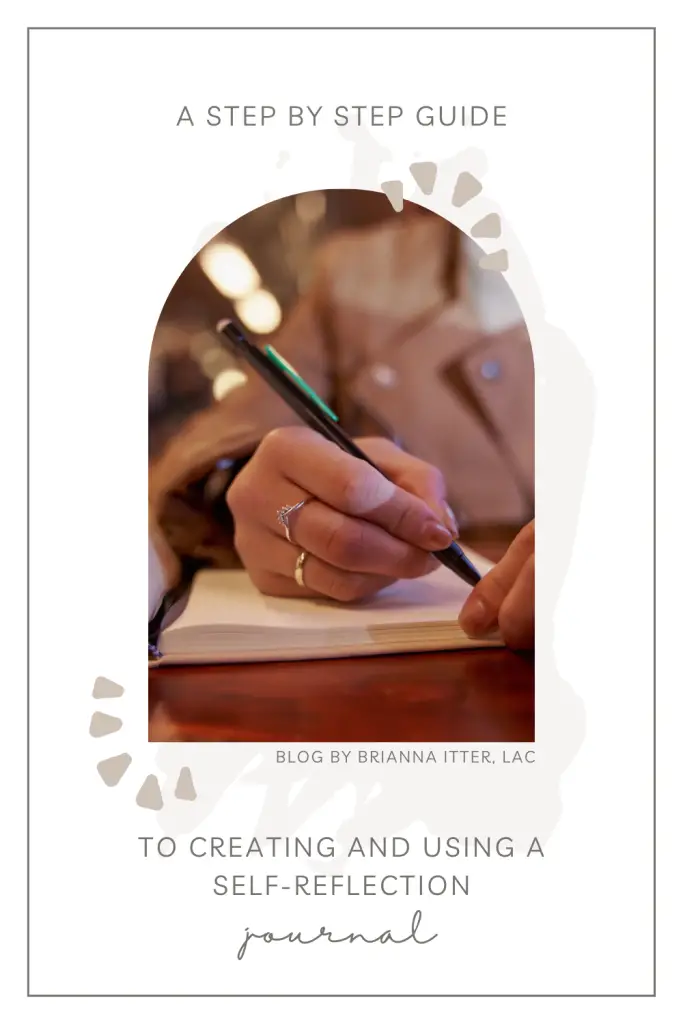
Frequently Asked Questions
What is mental wellness, and why is it important?
Mental wellness refers to a person’s overall mental and emotional well-being. It’s crucial because it affects how we perceive life, our general sense of happiness, and our ability to function effectively in society.
How does self-reflection contribute to mental wellness?
Self-reflection encourages mindfulness, allowing individuals to become more aware of their thoughts, emotions, and behaviors. By understanding oneself better, individuals can identify areas for personal growth and make positive changes to improve their mental wellness.
What are the benefits of incorporating a self-reflection journal into my routine?
A self-reflection journal provides a structured way to explore thoughts and feelings, leading to greater self-awareness and insight. It can help manage stress, improve emotional regulation, and promote personal growth and development.
How often should I engage in self-reflection journaling?
The frequency of self-reflection journaling can vary based on individual preferences and schedules. It’s recommended to start with a manageable goal, such as a few times a week, and gradually increase as desired.
What are some practical tips for effective self-reflection journaling?
Schedule dedicated time for journaling, reflect without judgment, set clear intentions or goals for each session, and investigate underlying emotions and motivations. It’s also helpful to use prompts or exercises to guide your reflection process.
Can self-reflection journaling help improve relationships and career satisfaction?
Yes, self-reflection journaling can enhance self-awareness in various areas of life, including relationships and career. By identifying patterns and areas for improvement, individuals can make positive changes that contribute to healthier relationships and greater job satisfaction.
Are there specific prompts or exercises I can use in my self-reflection journal?
Yes, there are numerous prompts available to help guide your self-reflection process. These prompts can focus on personal growth, relationships, career satisfaction, and overall wellness. Experiment with different prompts to find what resonates best with you.







